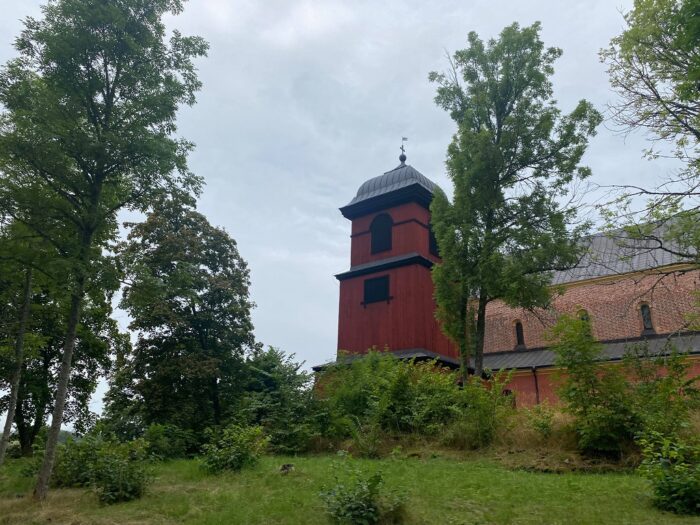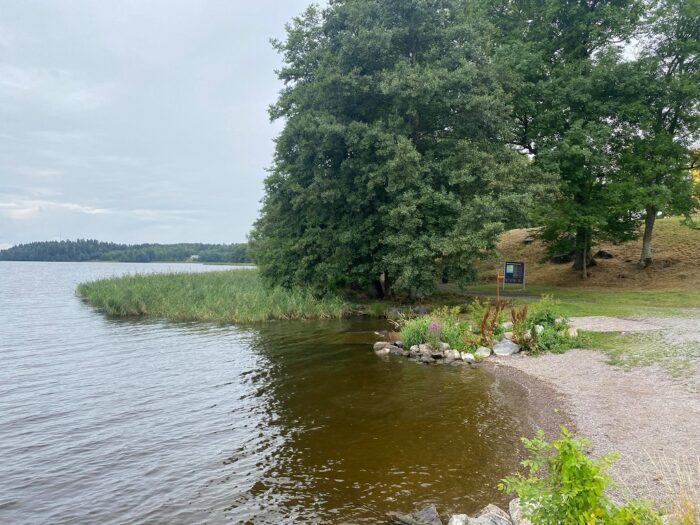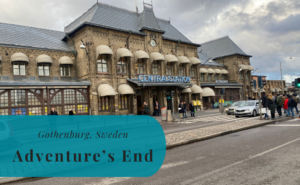Skokloster is the location and name of one of Sweden’s most famous Baroque castles and it is a short distance to the northwest from Stockholm. Its location is the peninsula Skohalvön in Håbo Municipality. In English, this means something along the lines of the Shoe Convent on the Shoe Peninsula. The castle stands right next to a large gulf, Ekoln, a part of Lake Mälaren.





A Short History of Skokloster
The history of Skokloster can be split into two parts, the time of the abbey and the time of the castle. One gave the name to the area and the other has kept it as a popular tourist destination to this day. It was however a farmstead known under the name Sko that is believed to have been here to start with. The farmstead is known from as early as the 12th century.
Sko Kloster
The Abbey Sko Kloster was active here from the 1230s up until 1588. It was the Swedish King Knut Lång, Canute II the Tall, that founded this Cistercian nunnery in 1230. The Byarum Abbey was also moved here in 1236 after being founded in Byarum Parish, south of Jönköping, around 1170.
The abbey was partly burned down a few times during its first centuries. Harder times for the abbey would come in the 1520s. The Stockholm Bloodbath happened in the year 1520 and a few years later, in 1523, Gustav Vasa was elected king of Sweden. Gustav Vasa just needed a few years of reign before Sweden entered the reformation in 1527. The reformation meant that the abbey’s assets were confiscated by the crown. The abbey was also restricted from accepting any new members. The last nun at Sko Kloster was last mentioned in the records of 1588.
Skokloster Castle
The building that once made up the abbey is believed to have been demolished in 1574. Left of the religious center was only the abbey church. The property was in the 17th century ending up in the care of Herman Wrangel and his son began the construction of Skokloster Castle in the 1650s. The son, Carl Gustaf Wrangel did, however, not survive to see the completion of his castle. The construction stopped upon his death in 1676 and was never completed.
The castle came afterward in the possession of the noble family Brahe for several generations up until the last private owner Rutger Fredrik von Essen who was the owner up until 1967. Since then the Swedish state has been the owner of the castle, while the surrounding grounds have stayed in the possession of the von Essen family.





Things to Do and See
When it comes to a castle there is usually more to see than just the building itself. It is the surrounding parks and the long history that usually makes up most of a visit. This is exactly the case with Skokloster. If you don’t plan to visit the interior, then once you have seen the castle, then you have seen it. There is, however, a lot more to discover in the vicinity.
Skokloster Castle
The 17th-century baroque castle is the main sight for most visitors. It is the largest privately built palace in Sweden. It was built by the Swedish field marshal and later governor-general of Swedish Pomerania and admiral Carl Gustaf Wrangler. A possible inspiration could have been the Ujazdów Palace in Warsaw, Poland. The palace was under siege by Wrangler and his Swedish troops during the Swedish Deluge. Simplified, this was a war where Sweden and Russia partitioned Poland (and Lithuania). A few wars later, Sweden attempted to take Moscow.
Skokloster Castle is today a museum with large art collections. Visits to the interior are limited to specific times. For external exploration, there is a huge green area to enjoy. There is also a small café for anyone who needs something to eat or drink.
Skokloster Church
Skokloster Church is what is left of the former abbey. Inaugurated in the 1280s, it stands right next to the waters of Fjard Ekoln. Standing outside the church is a large runestone, this is only one out of four in the vicinity of the church.
Flasta Church Ruin
About a kilometer from the church is the ruins of the much older Flasta Church. Not much is left of this church that is believed to have been built during the first half of the 12th century. The church burned down shortly after the completion of the new abbey church.
Fjard Ekoln
Ekoln is a fjard that connects Skokloster with Lake Mälaren, the third largest lake in Sweden. A fjard is similar to the more famous name fjord. A fjord is what you will find in Scandinavia along the North Sea coast, read Norway. When it comes to the Baltic Sea coast these are named fjards, or “fjärd” in Swedish. For any visitor, it is the drastic difference in the landscape that will be the difference. A fjord has much more dramatic cliffs and framing of the landscape than the more humble fjards.
For anyone not taking the normal road to Skokloster, this is the waterway that offers the second option. The ones who prefer the normal paved road, on two or more wheels, can still enjoy the view while walking along the waterfront.





How to Get to Skokloster
- Flights: The closest airport is Stockholm-Arlanda Airport (ARN), 39 kilometers away with both domestic and international flights.
- Car: Skokloster is along country roads north of Stockholm.
- Bus: Local and regional SL buses connect the area with the surrounding region.
- Train: There are train stations can in both Bålsta and Upplands-Bro, both with SL commuter trains to and from Stockholm.
The driving distance from 5 major Swedish cities, according to Google Maps:
- Stockholm – 66 kilometers (59 min)
- Gothenburg – 462 kilometers (5 h 36 min)
- Malmö – 679 kilometers (7 h 18 min)
- Linköping – 266 kilometers (3 h 4 min)
- Kiruna – 1218 kilometers (14 h 17 min)
Find out more about other destinations in Sweden by visiting our page Exploring Sweden






